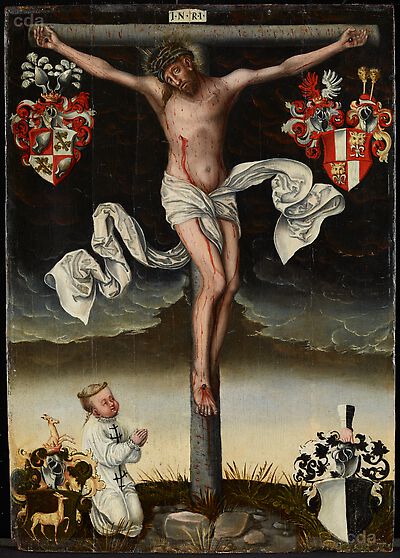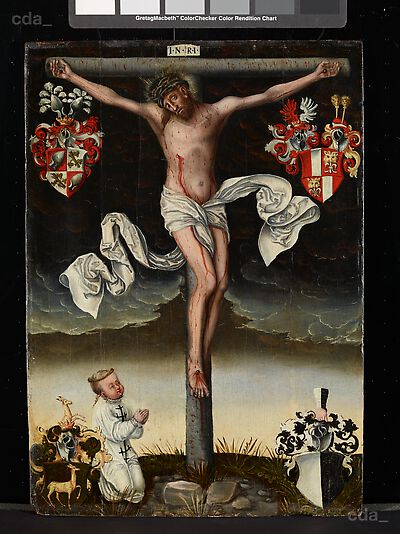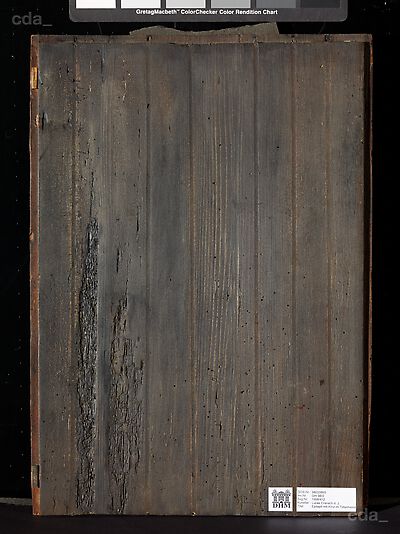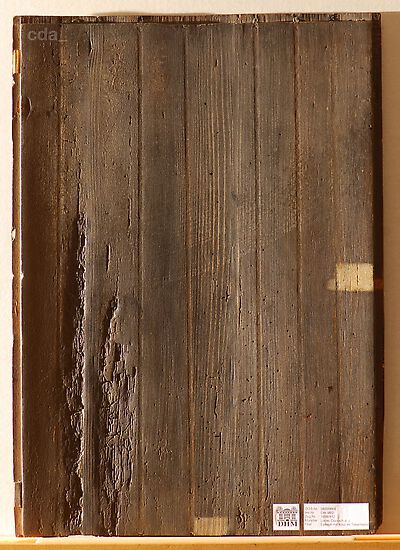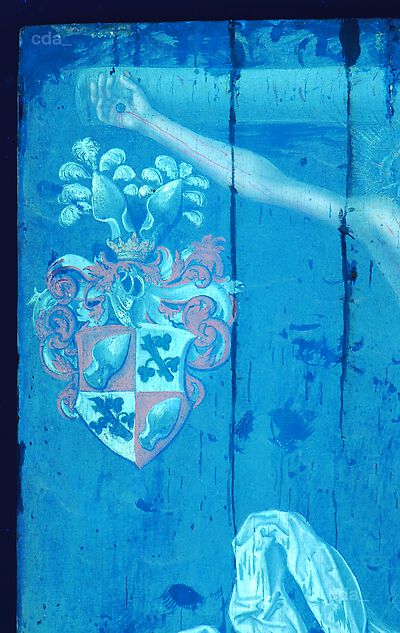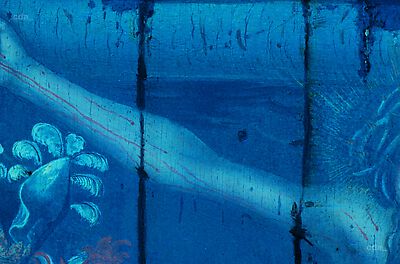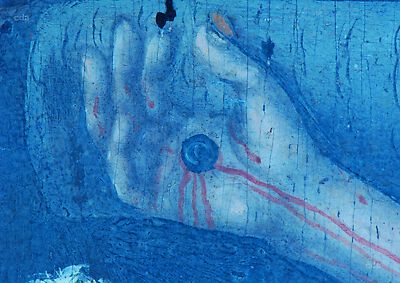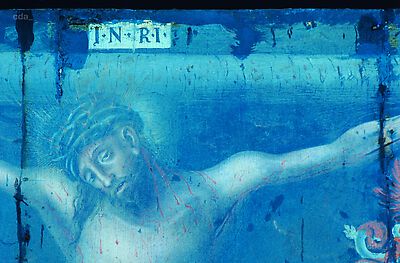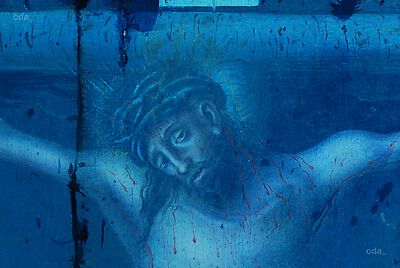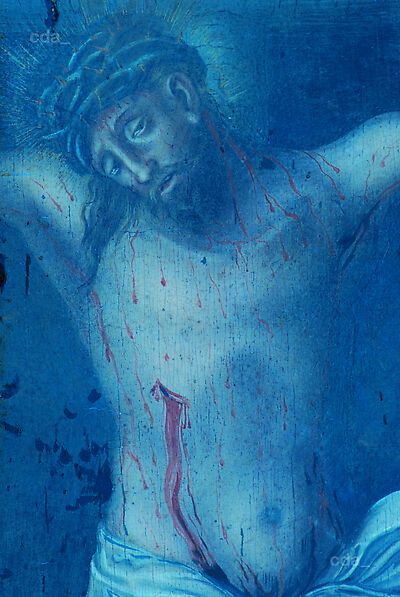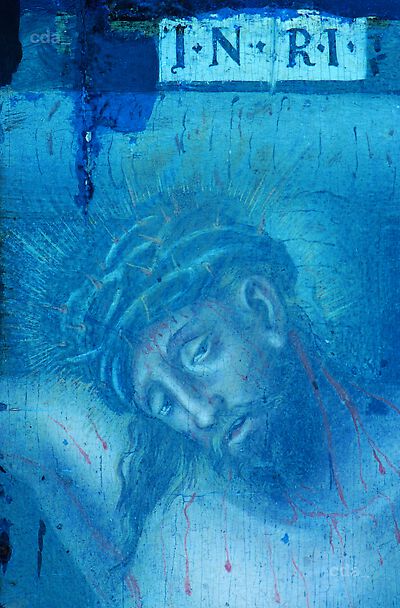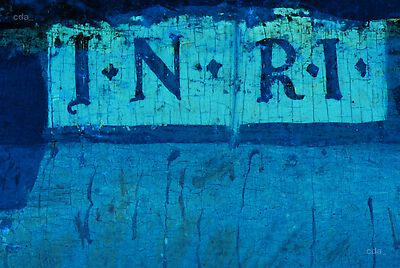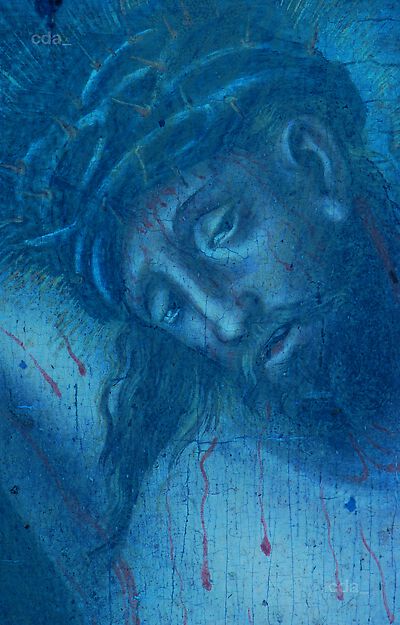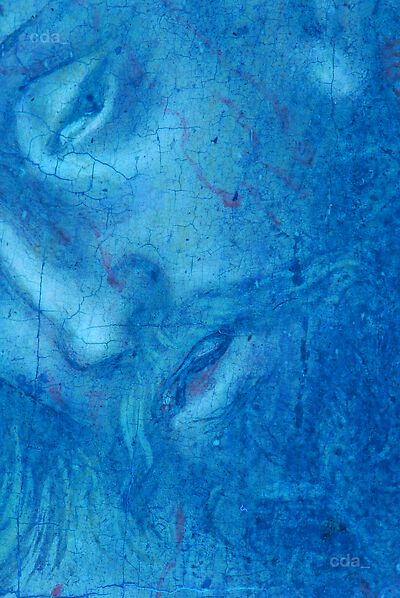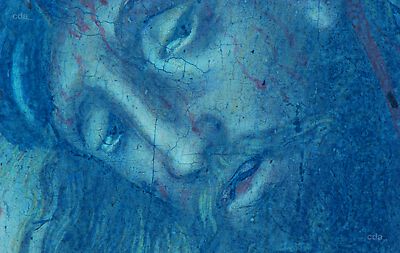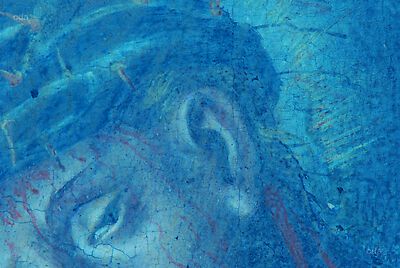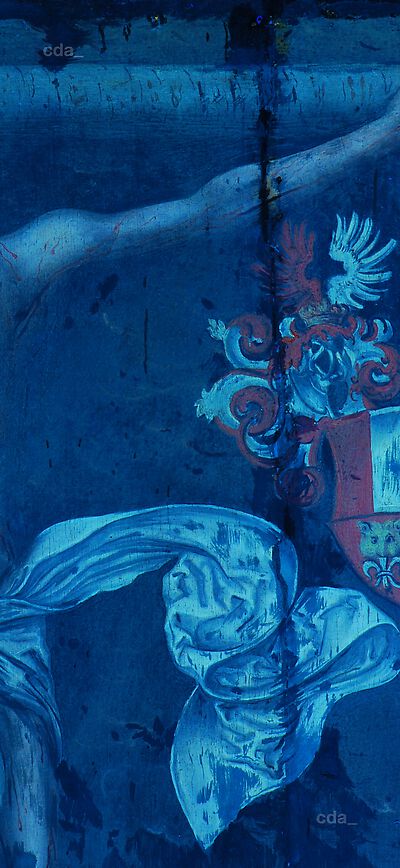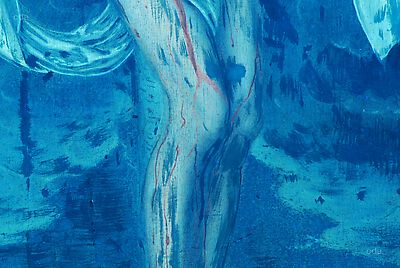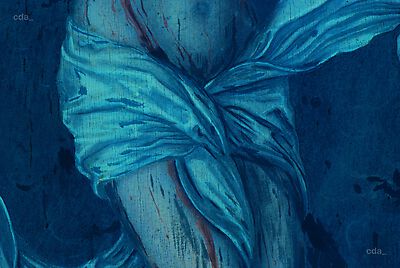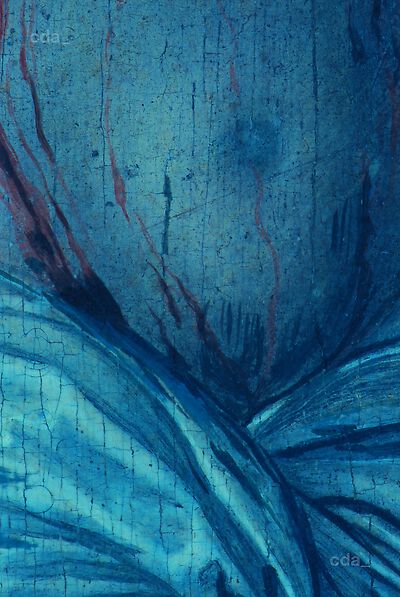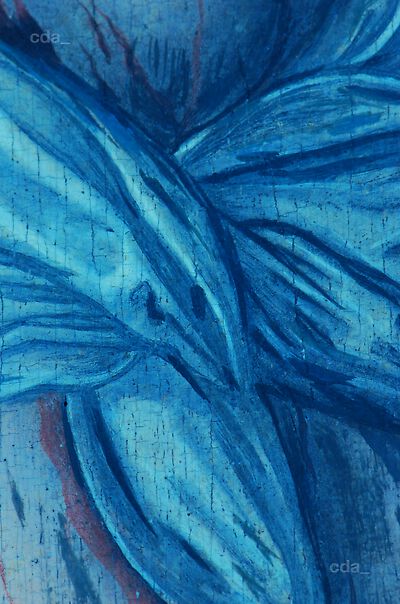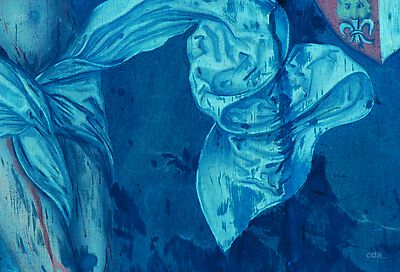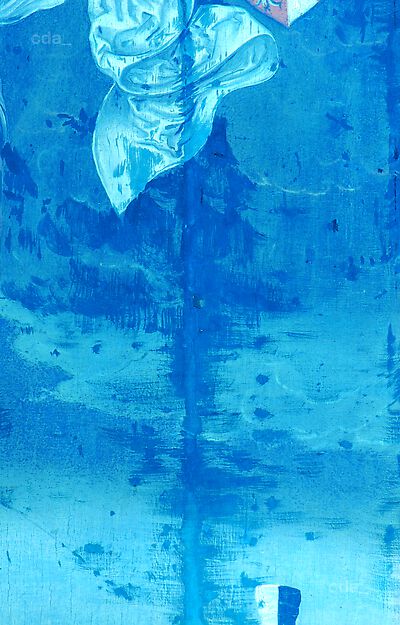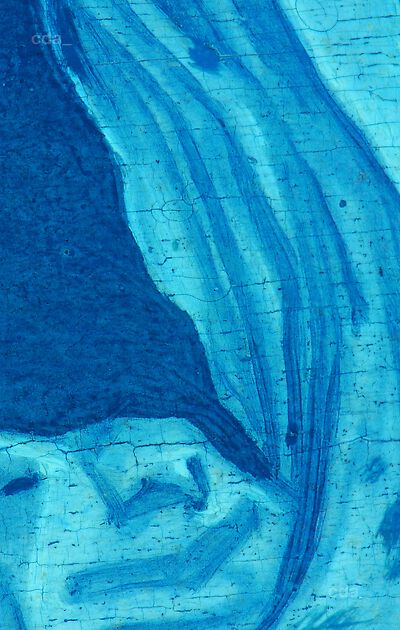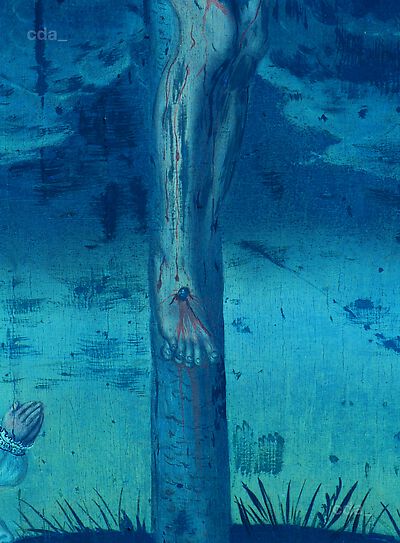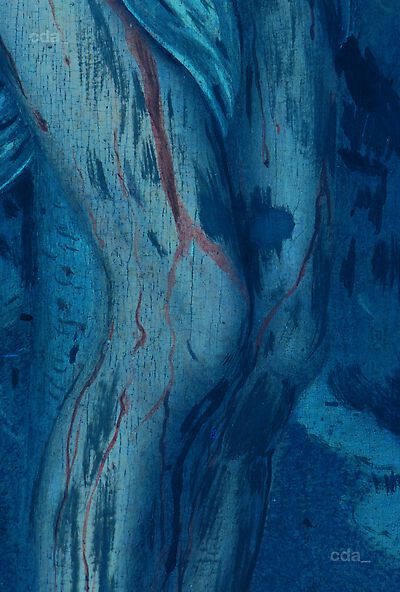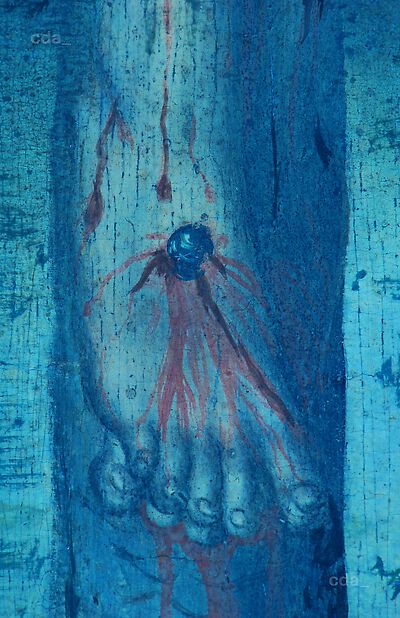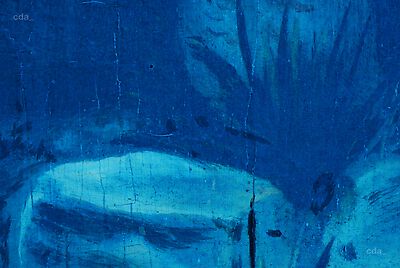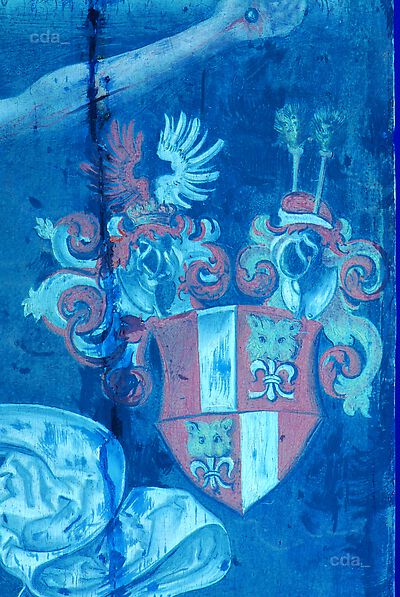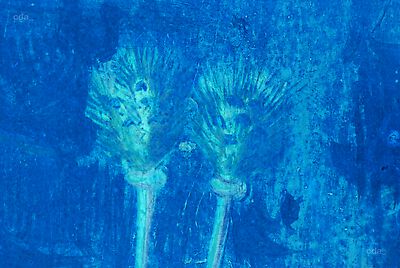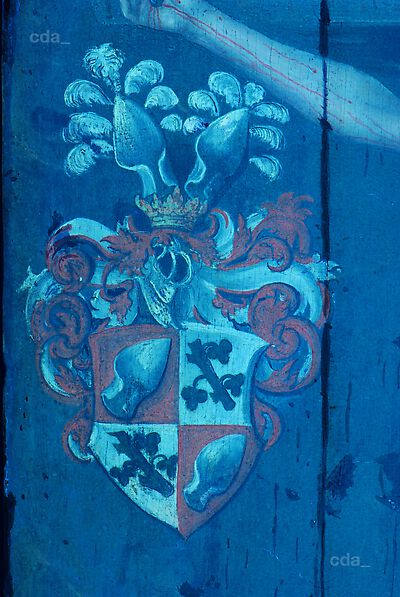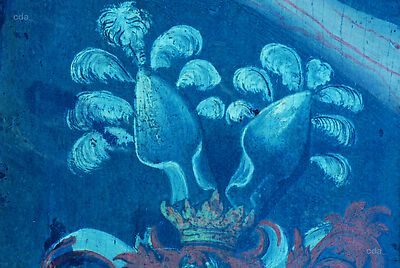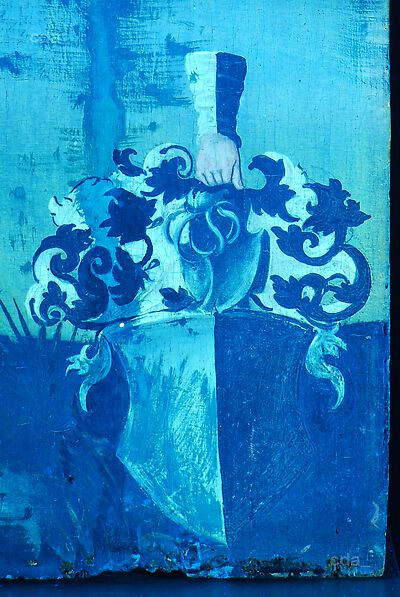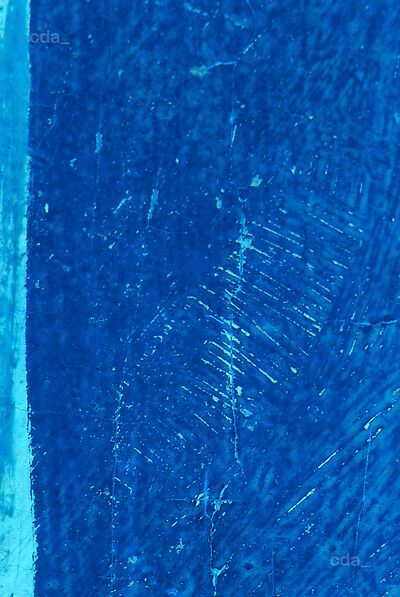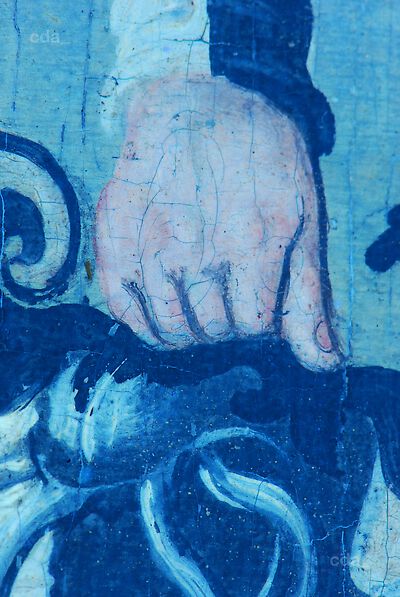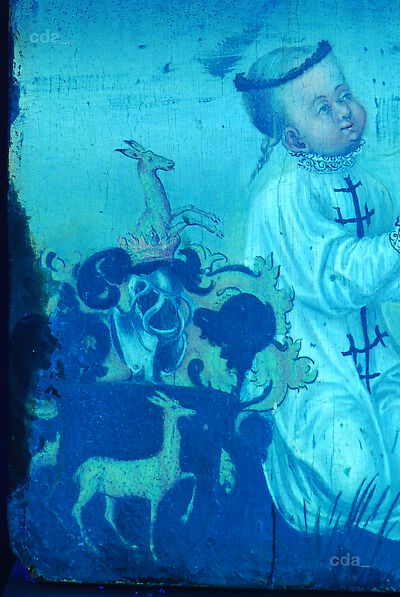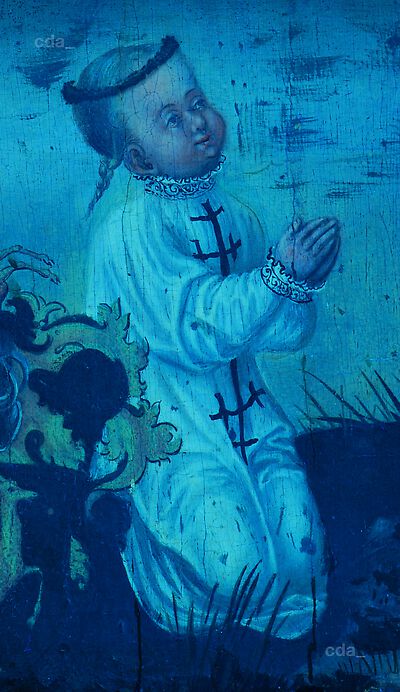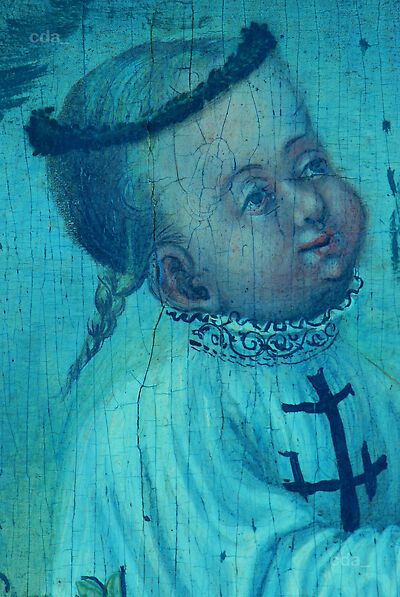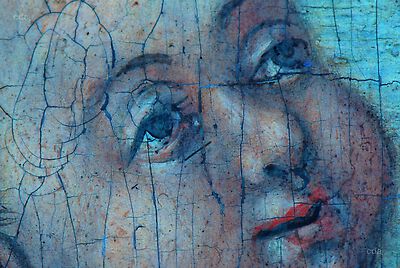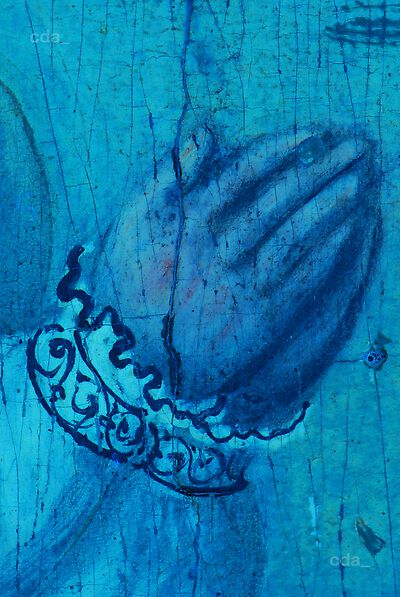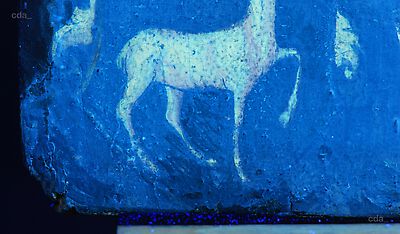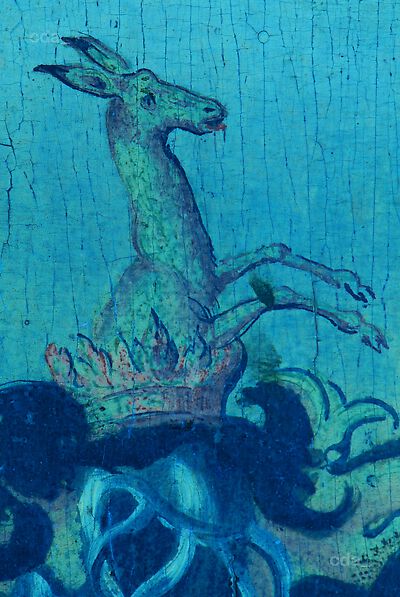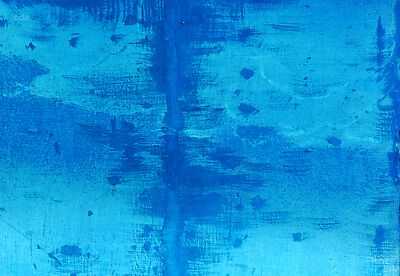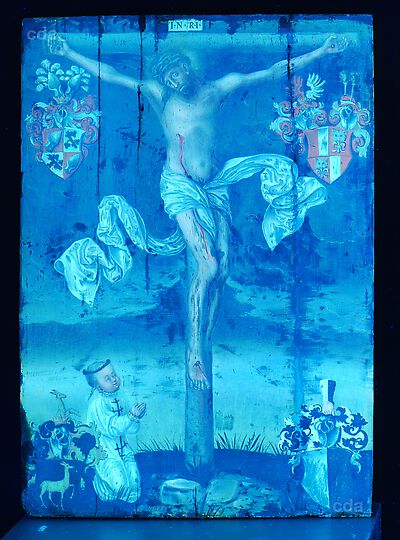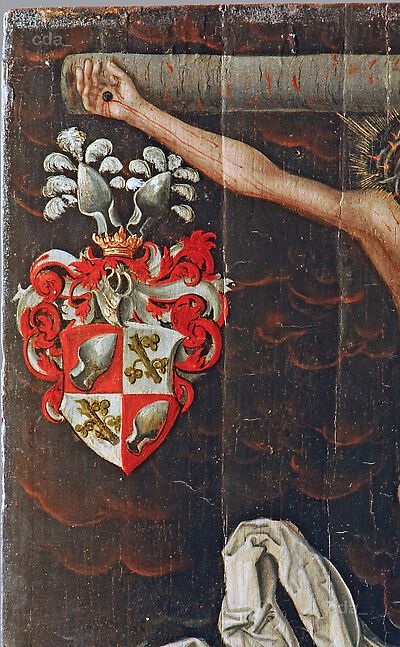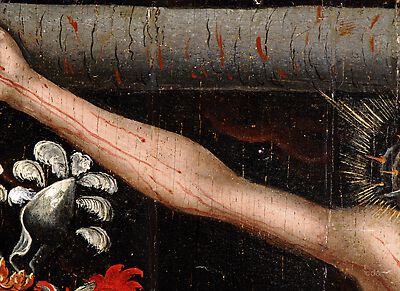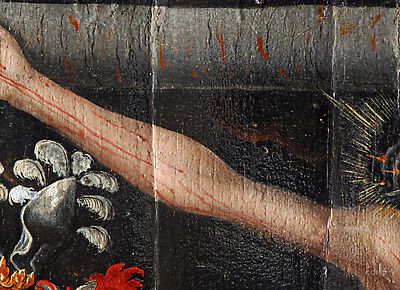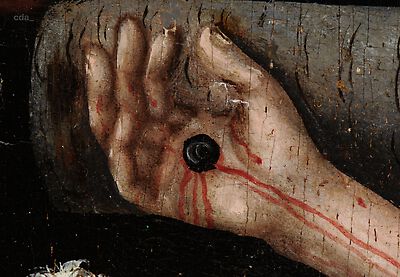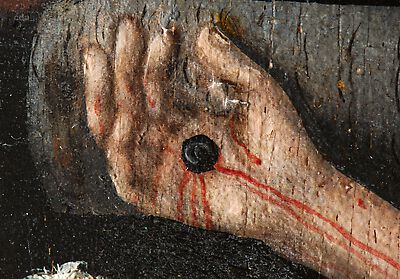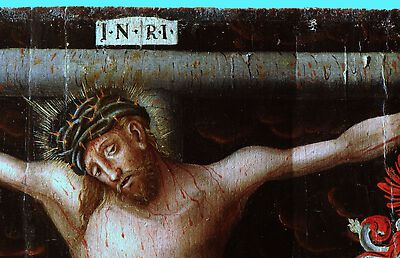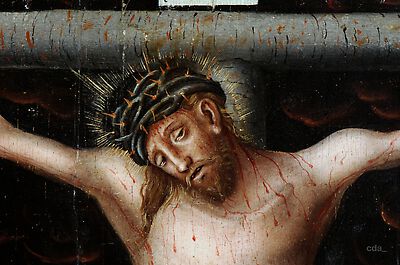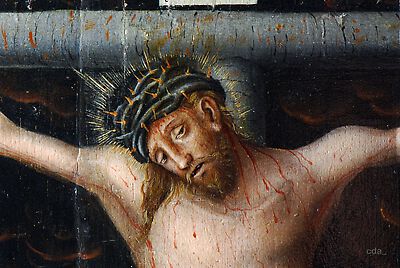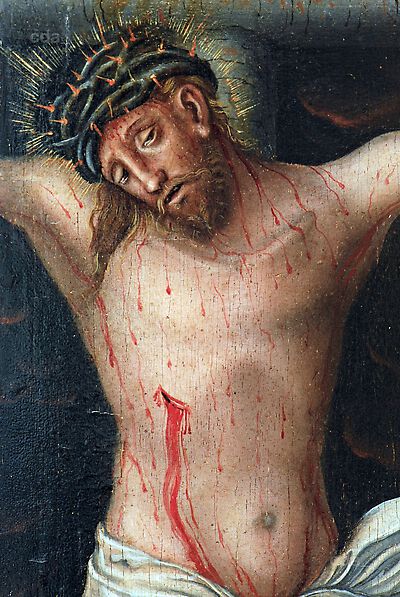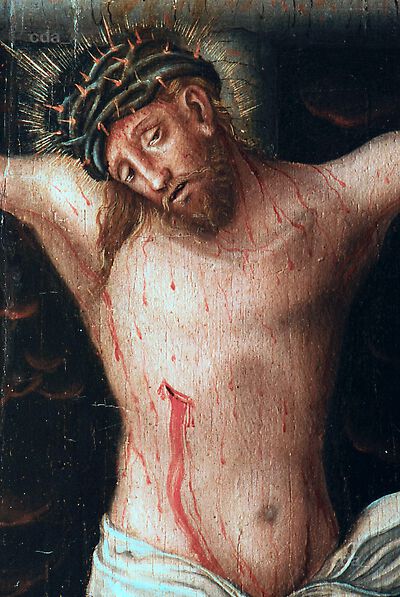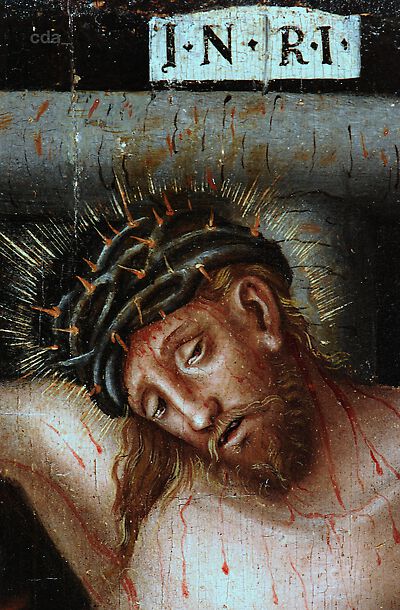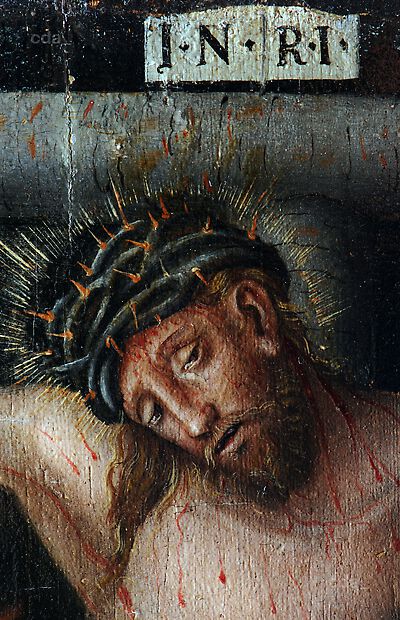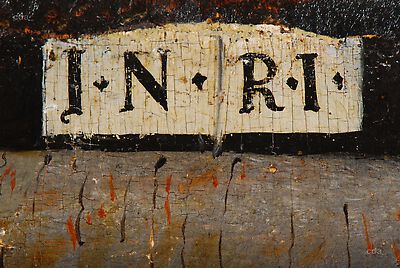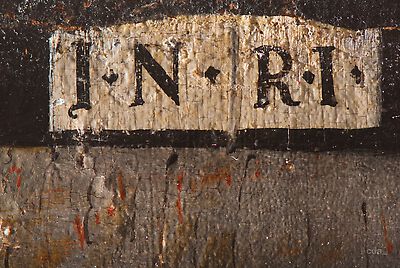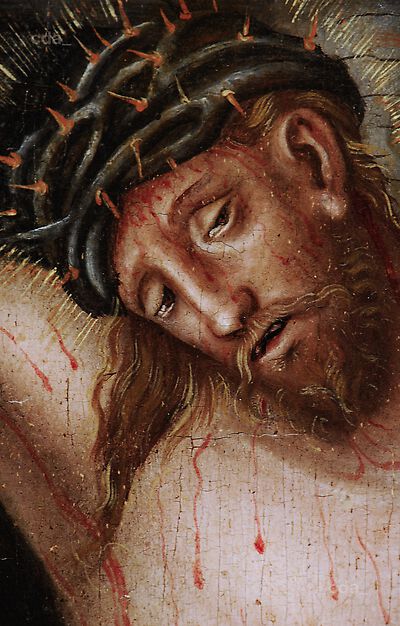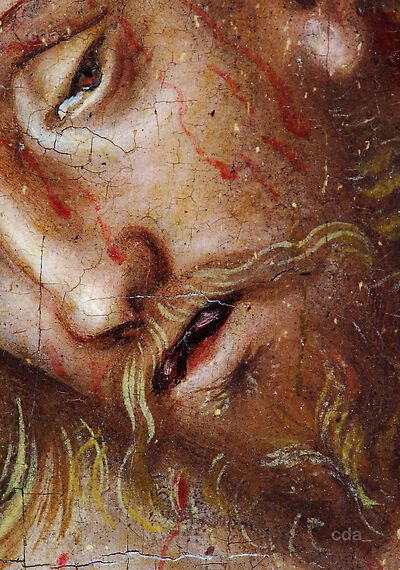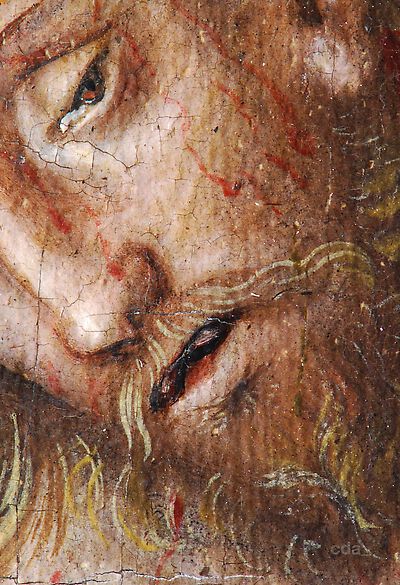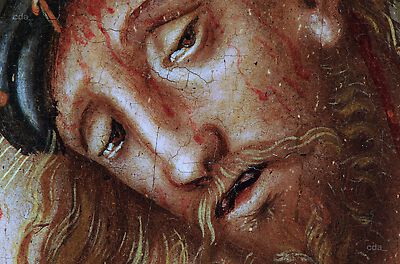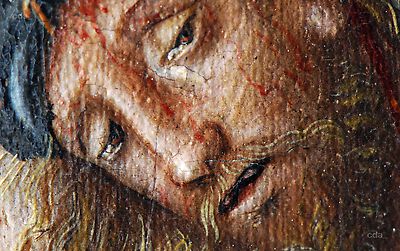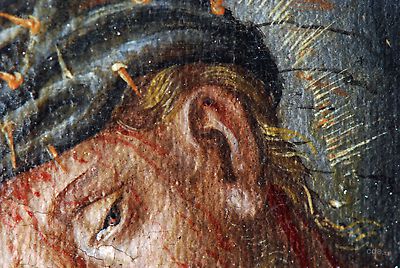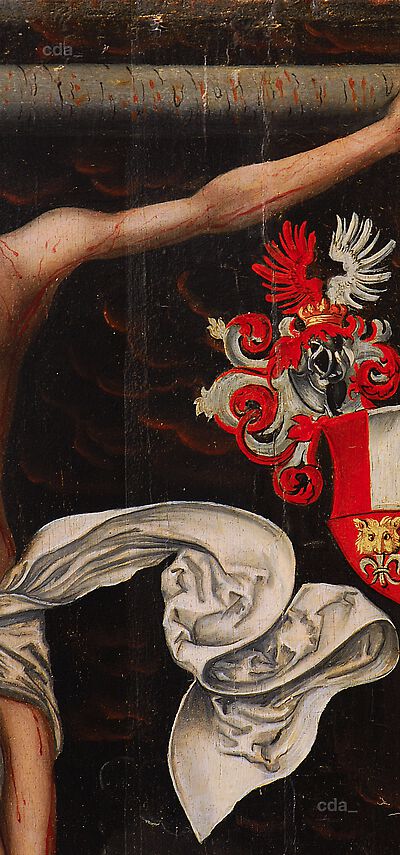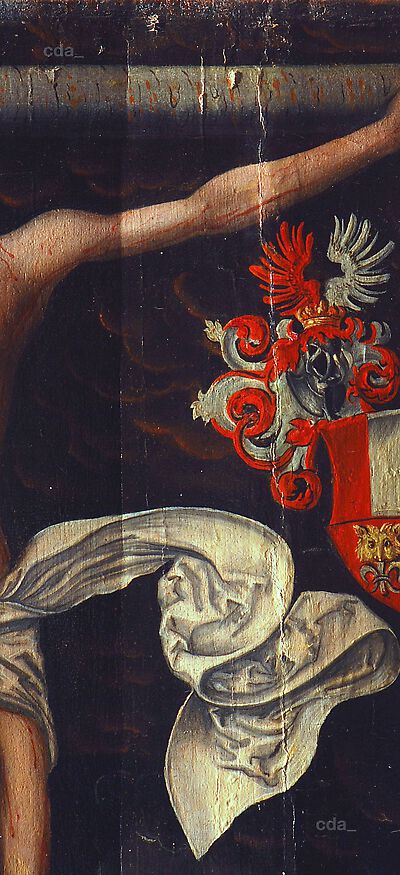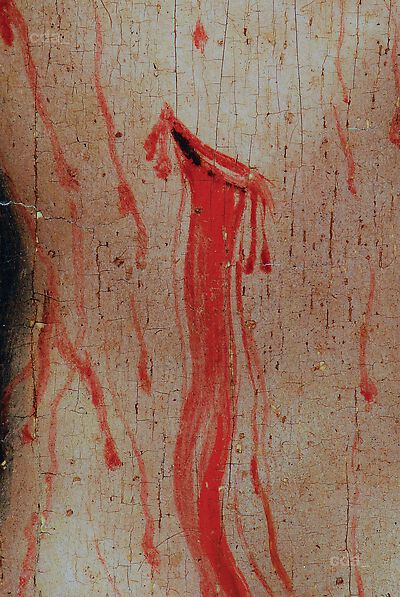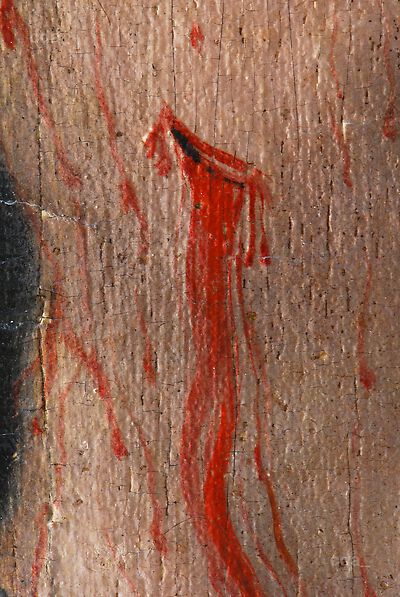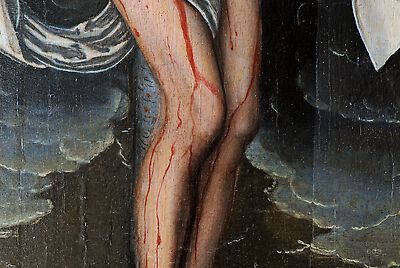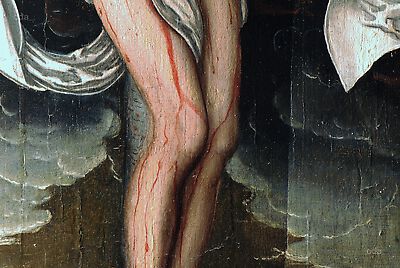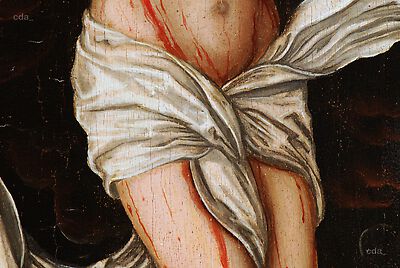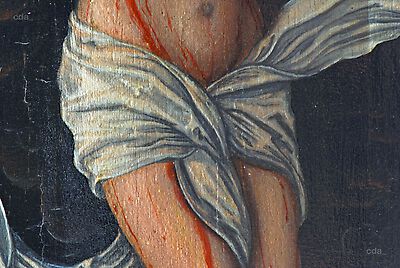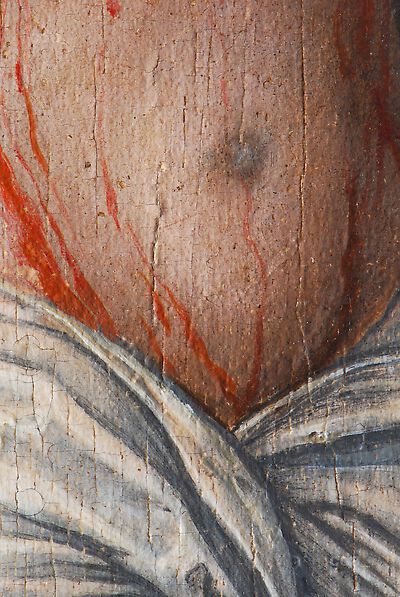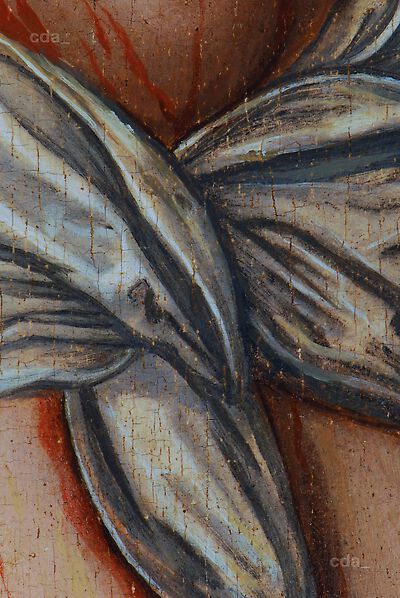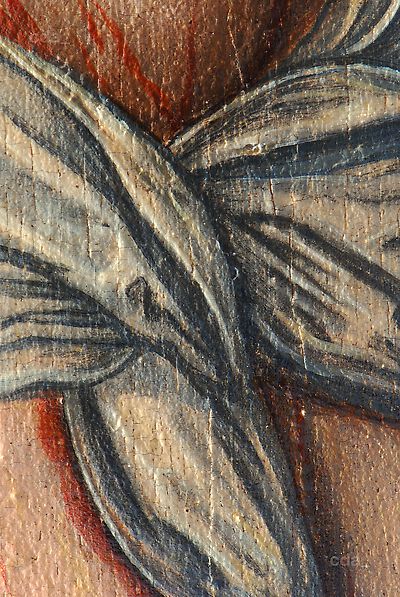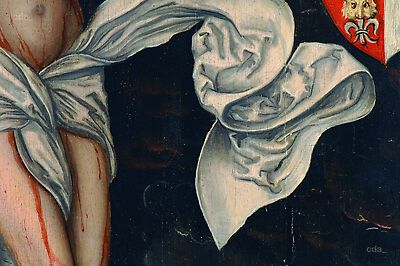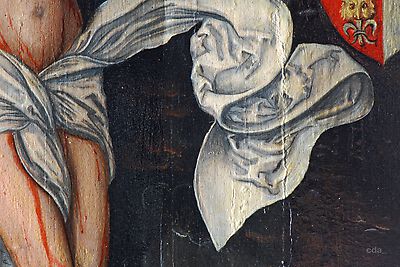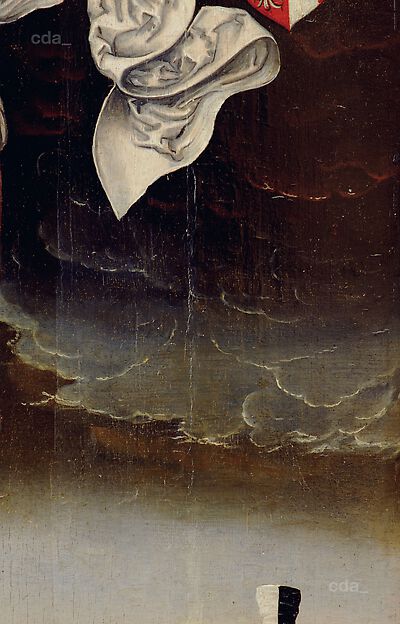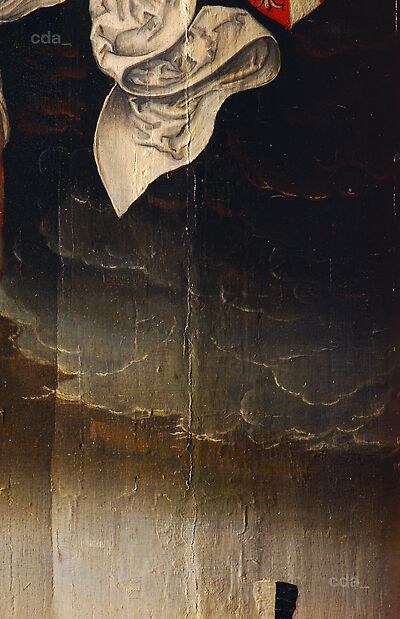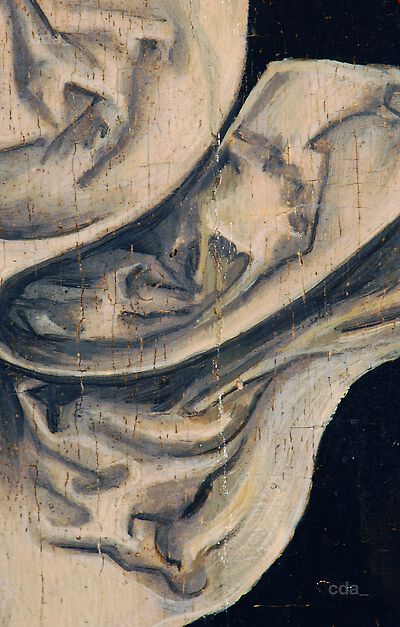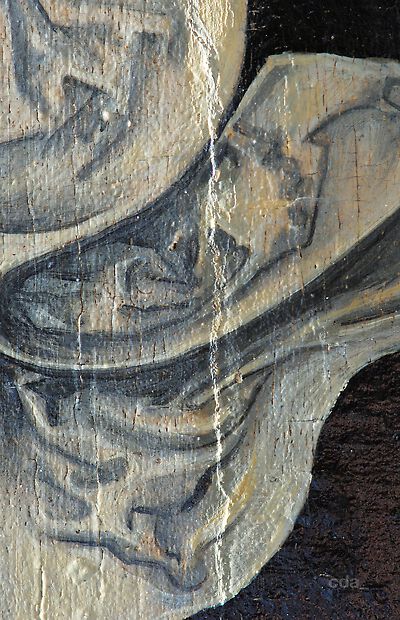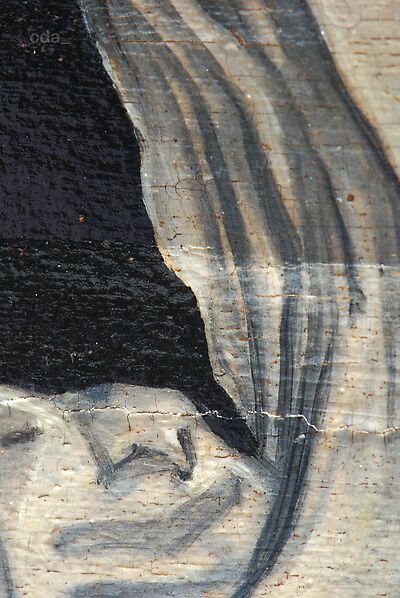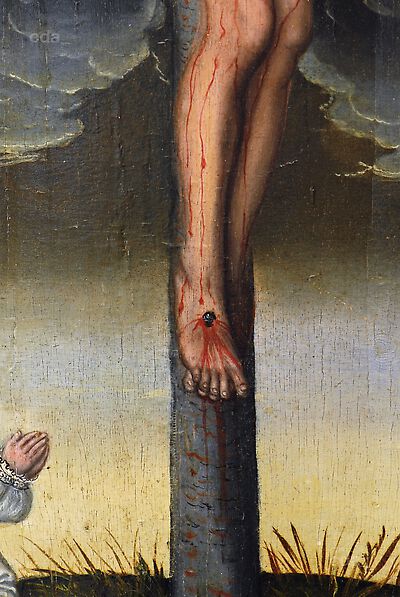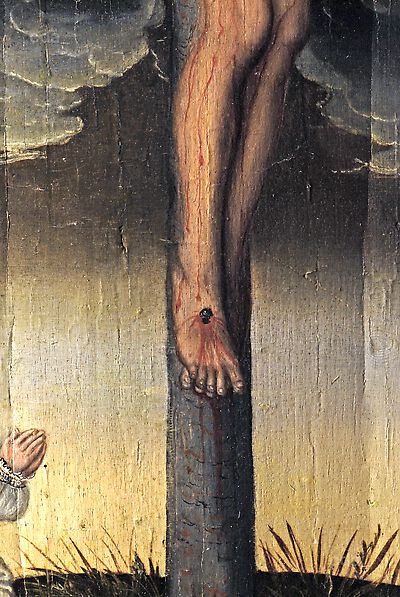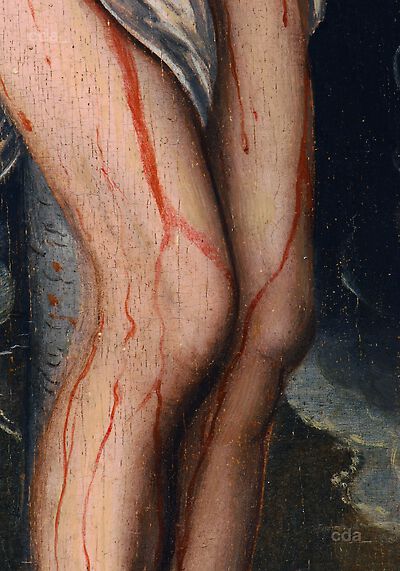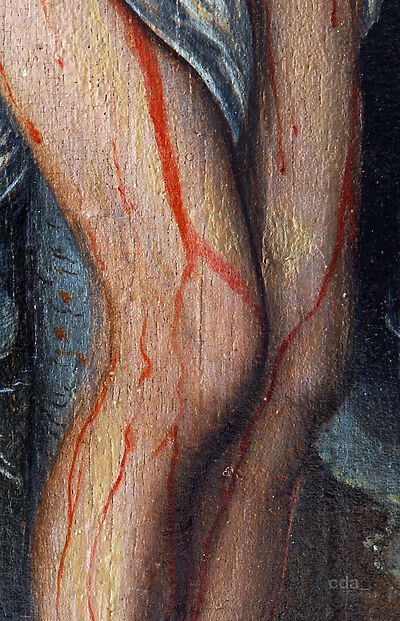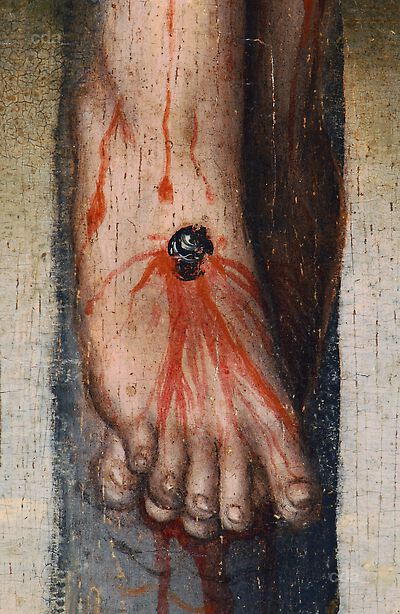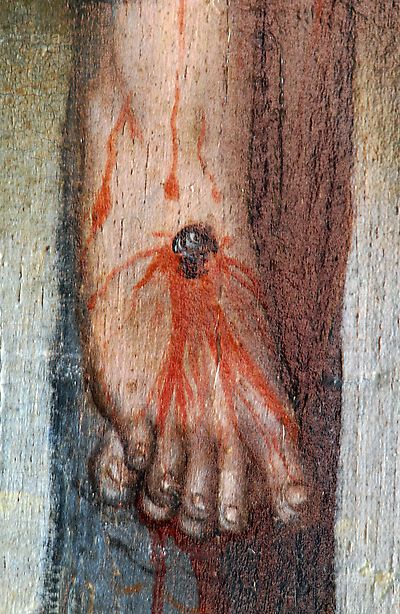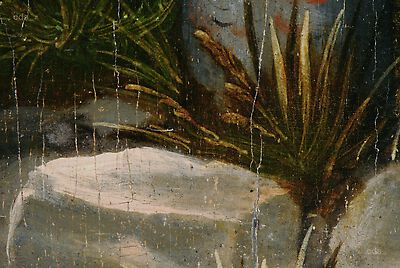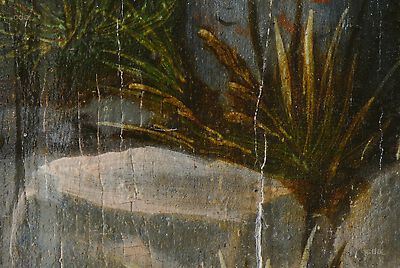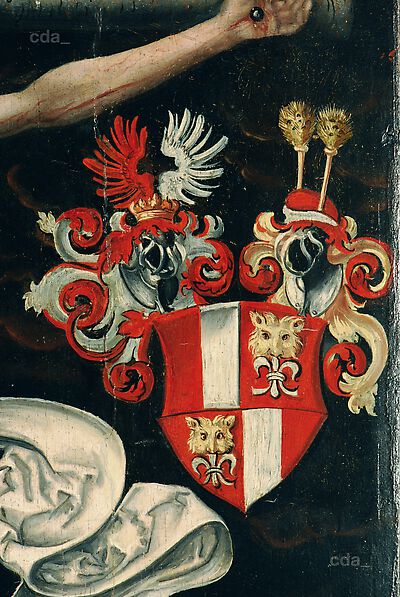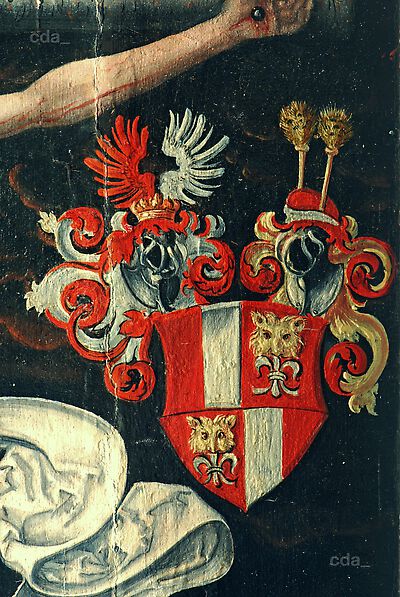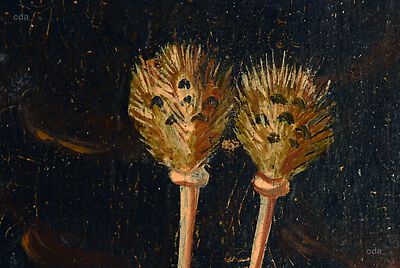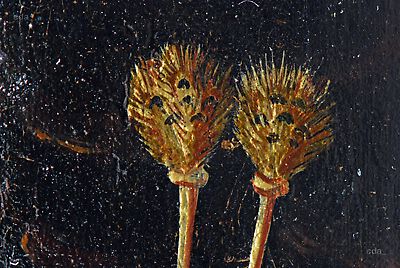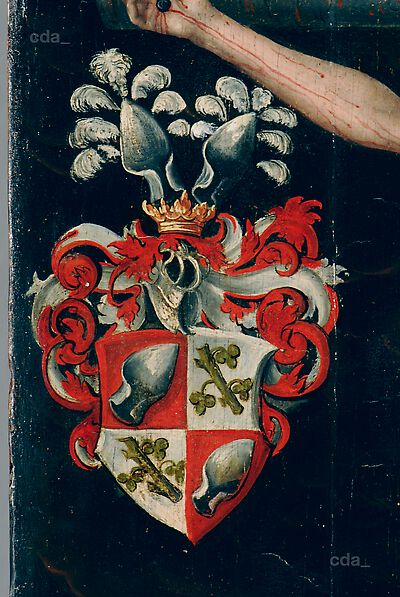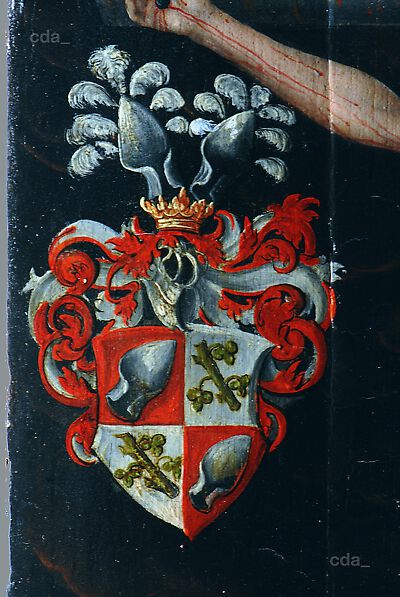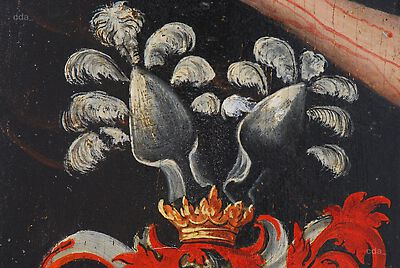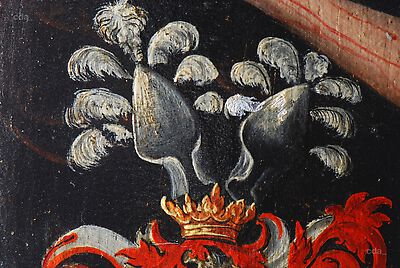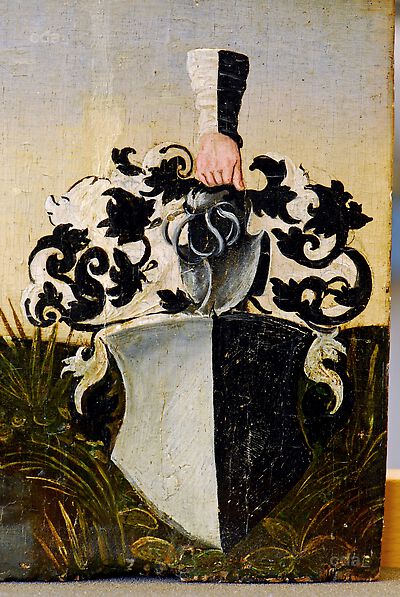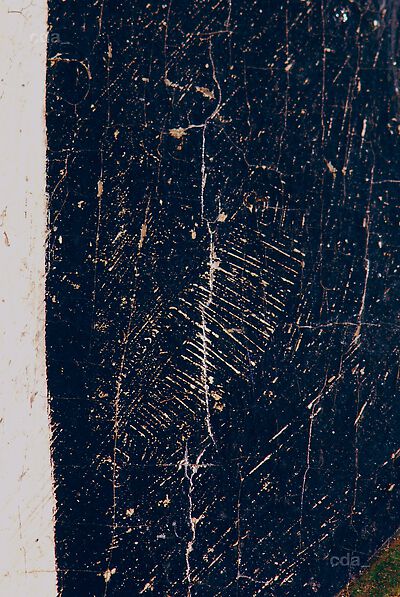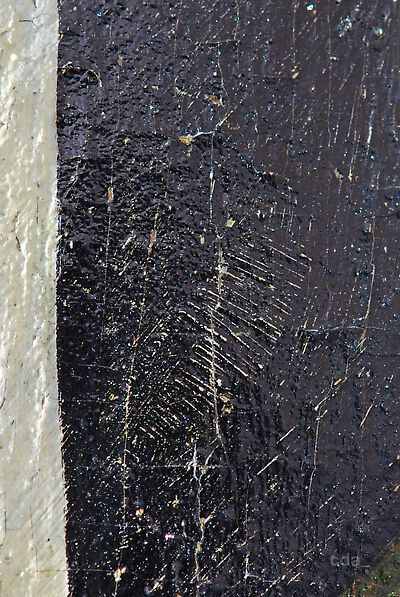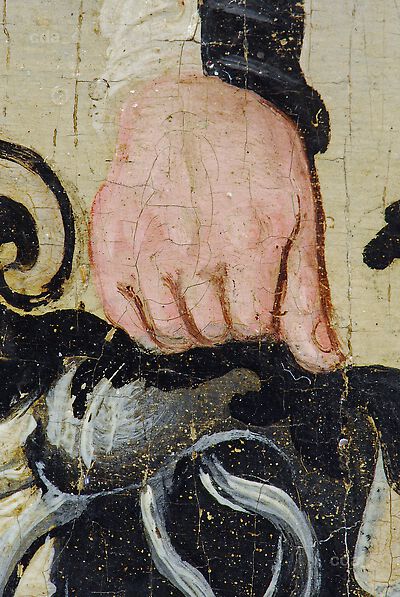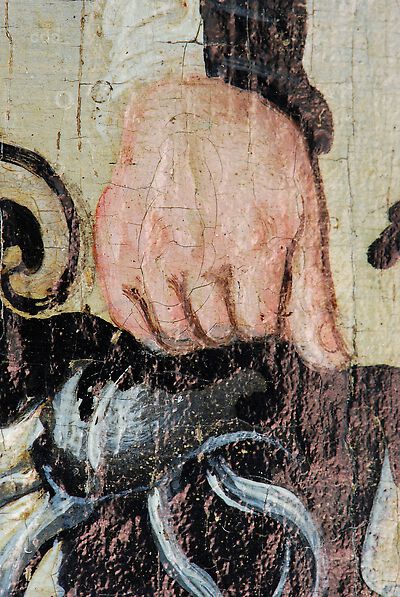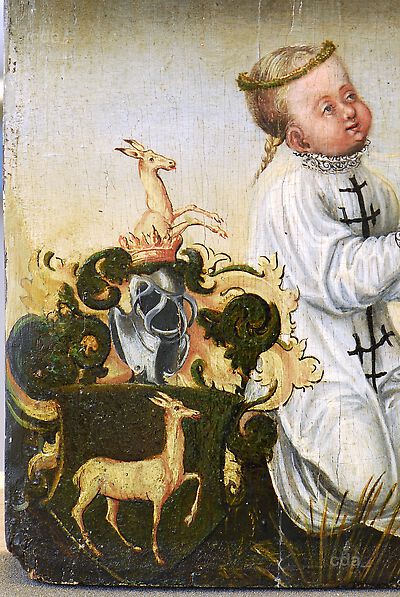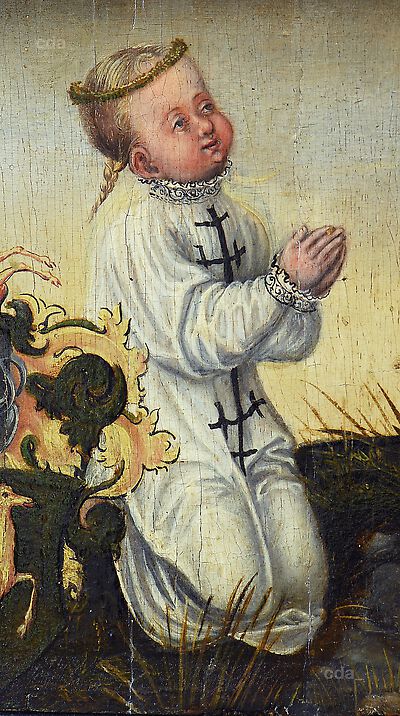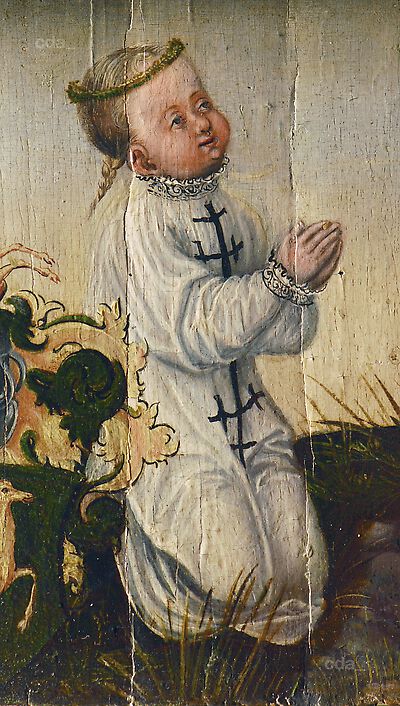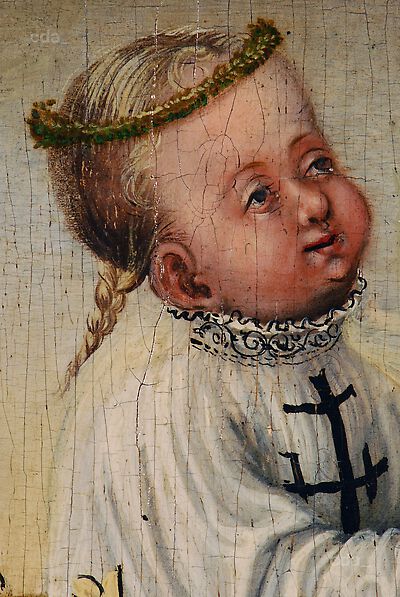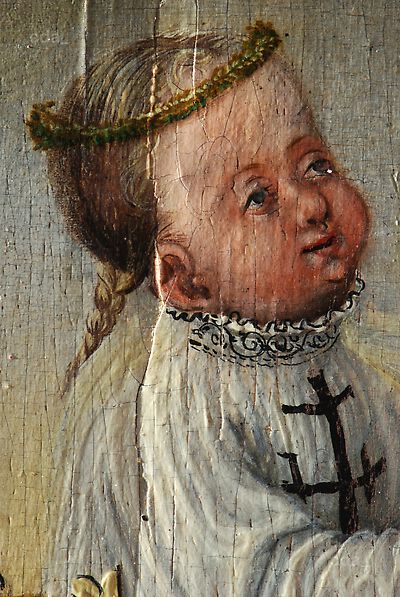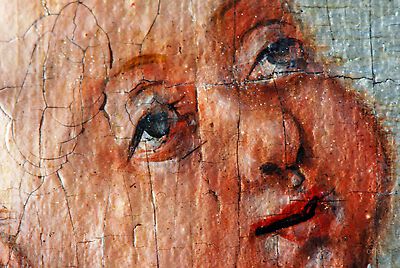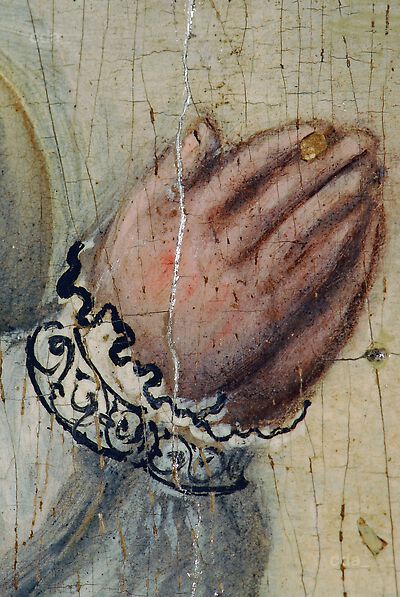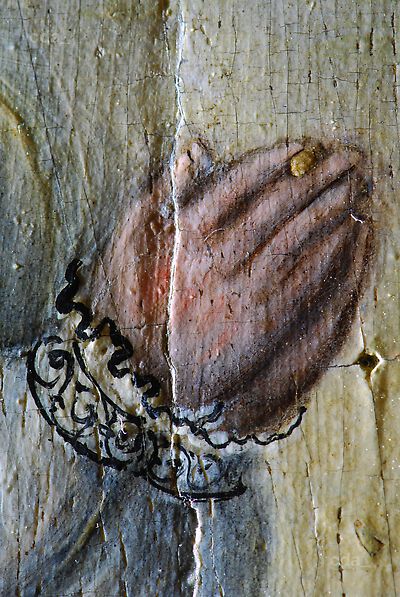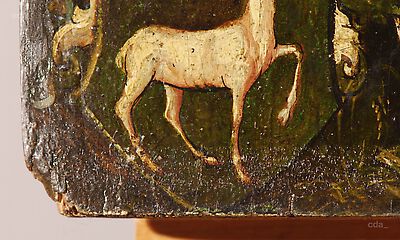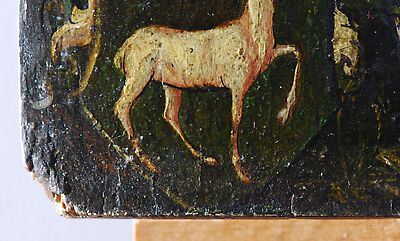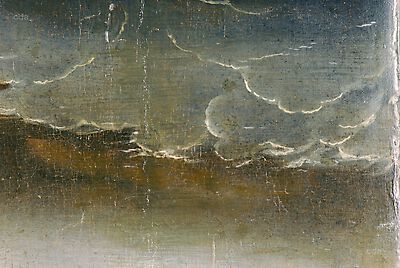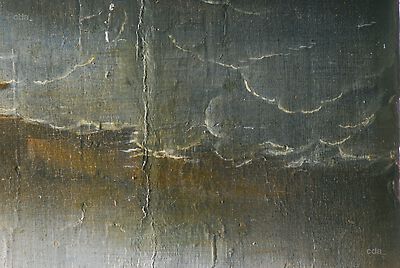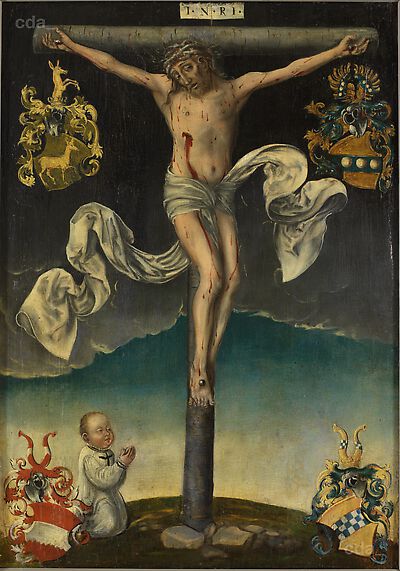Support
Limewood
The outer edges of the panel were thinned and are up to 0,5 cm thick. the thickness of the panel is about 1.2 cm altogether. The wooden panel consists of 3 vertical tangentially cut planks with oblique annual rings. Sapwood and heartwood were glued together. The heartwood side of all planks are on the left side as seen by the viewer and the sapwood on the richt side.
The widths of the planks are as follows (from left to right):
Plank 1: 13.8 cm (top); 14.4 cm (bottom)
Plank 2: 13.3 cm (top); 13.6 cm (bottom)
Plank 3: 8.4 cm (top); 6.9 cm (bottom)
In the area of both the joins triangular wooden keys were inserted with their points inwards. These might be original. there is a rebate of 0.7 cm in depth and 1 cm in width.
Ground and Imprimatura
Pale white chalk ground thatextends to the edges of the panel. There is no barbe. Lead white detected over the entire painting using X-ray fluorescence spectroscopy suggests the presence of an imprimatura containing lead white.
Underdrawing
Lines are visible on the mouth/lips, the hair, the hands, left of the beret - possibly a freehand drawing or traced from a pre-existing design; the painted version deviates slightly from the underdrawing (corrections were made to the hands).
An underdrawing is only clearly visible at the bottom right coat of arms. Saponification of paint layers containing lead white reveal slighty shifted forms beneath the painted version. Under high magnification single points are visible that are joined by a drawing implement with a chalky line. It may be assumed that it was pounced. In the left coat of arms lines applied in a watery medium with a brush. Here the painted version also deviates slightly from the underdrawing. In both cases the underdrawing appears more detailed. In the body, above all on Christ's stomach, single lines can be discerned that might have been executed with a stylus.
the right part of the head and the torso of the child were originally positioned further to the right. Darkening in the paint layers suggests the presence of pentimenti.
Paint Layers and Gilding
PIGMENTS: (X-ray fluorescence spectroscopy)
At all the points measured lead was detected (probably a lead based pigment in the ground or the imprimatur).
Red 1 (coat of arms): vermilion, lead white; 3, 15 (flesh paint): some vermilion, lead white; 4 (blood): vermilion, 5 (reddish clouds): some vermilion, lead white, probably carbon black, possibly some ochre.
Orange 11 (coat of arms): probably ochre, lead white
Grey 6 (clouds): smalt (faded), lead white, probably carbon black, some copper based pigments; 7, 16 (cross; coat of arms): lead white, probably carbon black; (dark horizon): smalt (faded), lead white, probably carbon black; 9 (lighter horizon): smalt (faded), lead white, probably carbon black
Green 12 (coat of arms): copper based green pigment (probably verdigris), lead-tin-yellow
White 13 (shirt): lead white
Yellow 2, 10 (coat of arms, horizon) lead-tin-yellow
Black 14, 17 (shirt; coat of arms): probably carbon black, a lot of copper based pigment (siccative?)
The ground consists of a pale white layer that extends beyond the right edge and is raised in sections. There is no barbe. Small losses and later reworking of the other sides precludes any comments on the original condition. The bottom edge has been cropped. The binding medium was not analysed. Later alterations compromised interpretation under the stereomicroscope but as far as could be established there is an ochre coloured imprimatur. The background was applied first over this layer holding the figure, the cross, the loincloth and the ground beneath the cross in reserve. The image was then worked up generally by applying light, shadow and textural details to a base tone. Finally highlights were specifically added and the deepest shadows were executed. The outlines do not always indicate the painted sequence, for example if in this context outlines overlap subsequently painted areas. Highlights were applied with a thicker paint. This is clearly evident in raking light. The lighter sections of the painting were - as is shown by the x-radiograph and confirmed by pigment analysis - painted employing a paint containing lead like lead white or lead-tin-yellow. The clouds, the coat of arms and the child were painted last. The green areas were applied in two layers a brighter green was applied over a duller one. The flesh paint is modulated in the initial layer and glazes were then added to indicate shadows.
The present varnish is not original.
Framing
Not original frame
Profiled battens, gilded, stained dark, sgraffitto
74 cm x 61.5 cm x 6.6 cm (glazed)
- examined by Mathias Lang
- examined by Ulrike Hügle
